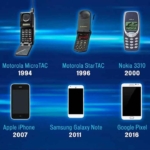As technology continues to advance rapidly, Virtual Reality (VR) and Augmented Reality (AR) have emerged as two prominent trends that are reshaping our digital experiences. Understanding the key differences between these two immersive technologies is essential for businesses and consumers alike.
What is Virtual Reality?
Virtual Reality (VR) refers to a fully immersive digital environment that replaces the real world with a simulated one. Users typically wear VR headsets that provide 360-degree views and sensory feedback, allowing them to interact with 3D virtual spaces.
What is Augmented Reality?
Augmented Reality (AR), on the other hand, overlays digital information and images onto the real world. This can be experienced through smartphones, tablets, or AR glasses, where users can see virtual items as part of their actual surroundings.
Key Differences Between VR and AR
| Feature | Virtual Reality (VR) | Augmented Reality (AR) |
|---|---|---|
| Experience Type | Immersive, fully virtual environment | Interactive digital overlays in real-world settings |
| Hardware | VR headset | Smartphones or AR glasses |
| Usage | Gaming, training, simulations | Navigation, education, marketing |
| Interaction | Complete escape from reality | Incorporation into real-life scenarios |
Where are VR and AR being used?
Virtual Reality is predominantly utilized in sectors such as gaming, medical training, and architecture, where users can simulate scenarios that are otherwise difficult to reproduce in real life. Examples include:
- Training medical professionals in virtual surgical environments.
- Creating immersive video game experiences.
On the other hand, Augmented Reality is making significant impacts in everyday applications, such as:
- Navigation apps like Google Maps that provide visual cues.
- Interactive marketing campaigns that engage consumers through their smartphones.
Conclusion: Understanding the Future of Immersive Technologies
In conclusion, both Virtual Reality and Augmented Reality offer unique experiences and applications that cater to different sectors and needs. As these technologies evolve, understanding their fundamental differences will be crucial for businesses looking to innovate and engage with audiences effectively. The future of “immersive technology” is indeed promising, as both VR and AR continue to complement each other in enriching our digital experiences.














